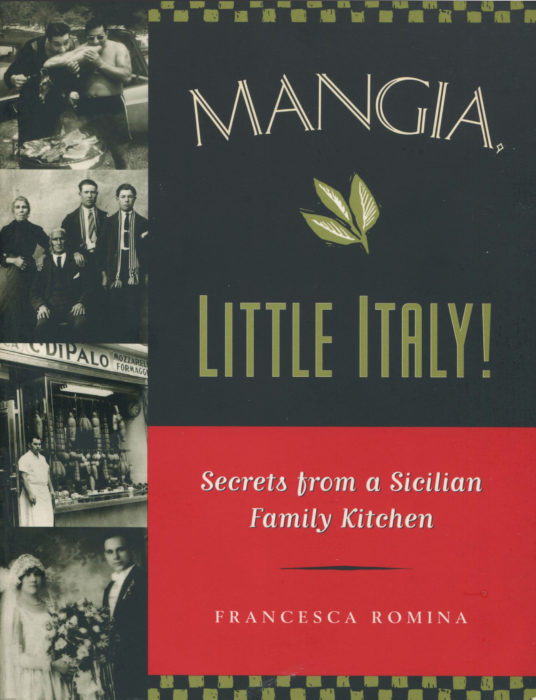
Francesca Romina is a second-generation Sicilian-American who grew up at the edge of her grandmother’s apron. That Sicilian grandmother took her through the streets of Little Italy in New York City — when Little Italy still existed — and then brought her home to teach her the grandeur of Mediterranean dishes
Sicily now is surely part of Italy, but it has a vastly complicated culinary and cultural history. Greeks, Romans, Ostogoth, Byzantines and Arabs have invaded and influenced the island over centuries of both turmoil and peace. With its central location in the Mediterranean, Sicily has been a trading center where Africa, Europe and even Asia have offered goods, ideas, and recipes.
The Italian influence is, of course, the dominant one. And Italian culinary philosophy is evident on every page. The recipes here are authentic, either Italian or Italian-American. There are both recipes and stories offering love and humor. Where did lasagna come from? Don’t they eat fish every day in Sicily? The answers are Little Italy in the United States and “no.” With no refrigeration available for most of the centuries, fish could not be a daily staple — though fish now is abundant in this book.
Italian recipes are often characterized as being simple. Basic ideas that taste so ideally because they have been groomed for centuries. Like Sautéed Black Olives with Scrambled Eggs for breakfast. Incredibly easy, yet a breakfast dish you probably have not experienced.
Four recipes from the book point out the distinctiveness of Italian cuisine and its commonality with our American.
Commonality? Yes, there is a Pea Soup here made with carrots, celery, a ham bone, ham steak, and some bacon. The recipe is quite like one you could find in any New England cookbook.
Italian cooking is always simple. Yes, often it is. A primary ingredient may need very little other ingredients or preparation to grace your plate with distinction. For example, Baked Bluefish with Lemon, Oil, and Garlic speaks volumes about the power of stark but cultured simplicity.
Italian cooking is different: the same recipe name can lead you down a very different path. Yes, as in Sicilian Potato Salad made with only potato and red onion, garnished with vinegar, olive oil, oregano, parsley, basil and green olives. No scallions, no hard-boiled eggs and no mayo!
Italian desserts are simple. No, often not. Italians actually are not dessert-crazed like Americans. Dessert can mean fruit. And, if you want something quite elegant, then in Italy or Sicily you might be purchasing it. But, if you want to try your hand at a classic, there is the Cassata from the famed, and now closed, De Robertis pastry store in Manhattan. Here sponge cake is combined with cannoli cream and embraced in a fondant icing. There are two dozen ingredients and four pages of detailed instructions. And that’s why most defer to “buying” rather than “making.”
Mangia serves as an encyclopedia of Sicilian and Sicilian-American cooking. There are old friends here and surprises. You’ll recognize the Leg of Lamb with Lemon, Oil and Garlic. I doubt you’ve sampled Fried Squash with Basil and Grated Cheese. But you just might want to. There are treats everywhere in Mangia.
